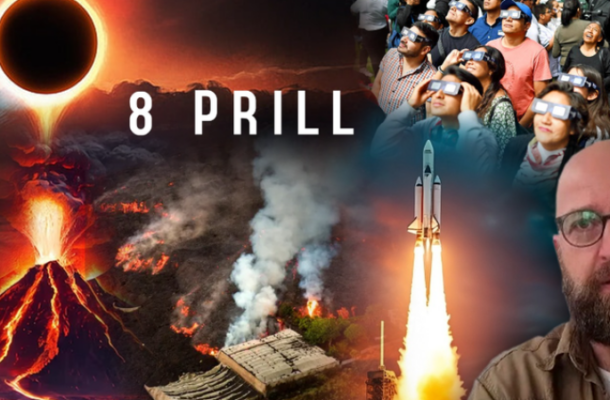A conspiracy theorist's alarming predictions about the upcoming April 8 eclipse have stirred debate and caution. Read on to discover the details of the warning and expert insights.
Introduction: As the world anticipates the celestial spectacle of the April 8 eclipse, a prominent Albanian conspiracy theorist has sounded a stark warning, sparking intrigue and concern among viewers. Arianit Sllamniku's dire predictions of potential blindness for earthlings during the event have raised eyebrows and prompted discussions about safety measures and the veracity of his claims.
Albanian Conspiracist's Alarming Prediction: A Closer Look
Warnings of Impending Darkness In a recent television appearance, Arianit Sllamniku delivered a chilling forecast regarding the forthcoming April 8 eclipse. Citing past occurrences and purported analyses by the University of Toronto, Sllamniku cautioned against direct viewing of the eclipse, asserting that it could result in complete blindness for observers.
Echoes of Past Events Sllamniku drew parallels to a previous eclipse in the United States, approximately seven years ago, where authorities issued warnings to citizens. He highlighted incidents in Canada during the eclipse's timeframe, suggesting a correlation between celestial events and increased accidents. Additionally, he hinted at potential volcanic activity, citing NASA's announcement of three rockets scheduled to be sent to the Moon around the same time.
Expert Rebuttal: Assessing the Risks
Contrary Views and Expert Opinions In contrast to Sllamniku's ominous predictions, experts like Erald Buneci have sought to allay fears, particularly regarding the situation in the United States. Buneci reassured the public that there would be no significant issues in the USA, albeit cautioning against direct observation of the eclipse without protective eyewear.
Navigating Safety Measures While acknowledging the spectacle and significance of the eclipse, experts emphasize the importance of adhering to safety guidelines. Direct viewing of the eclipse with the naked eye poses risks of retinal damage and potential vision impairment. As such, observers are urged to utilize appropriate eye protection or indirect viewing methods to safeguard their eyesight.
Conclusion: As anticipation mounts for the April 8 eclipse, contrasting narratives from conspiracy theorists and experts underscore the importance of discernment and caution. While sensationalist warnings may capture attention, it is imperative for individuals to prioritize safety and rely on evidence-based information. Whether admiring the celestial event or evaluating potential risks, informed decision-making remains paramount in navigating the cosmic spectacle.


Comments